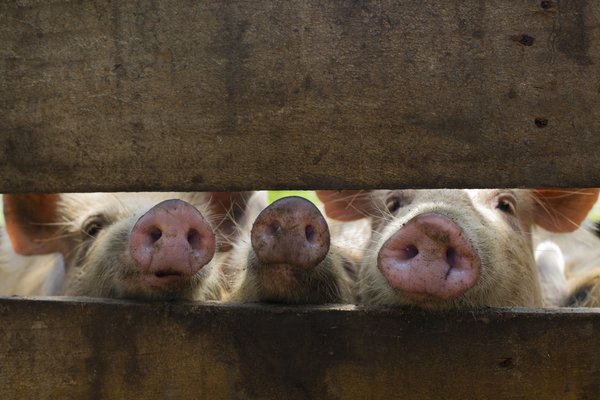- Share this article
- Subscribe to our newsletter
Large African swine fever losses in China
Since China’s Ministry of Agriculture and Rural Affairs (MARA) confirmed its first African swine fever (ASF) outbreak in August 2018, 133 ASF outbreaks were detected in 32 provinces by mid-May 2019, according to the Food and Agriculture Organization of the United Nations (FAO).
More than one million pigs have been culled in China in an effort to halt further spread, MARA reported on 23 April 2019. China is a major producer of pork and accounts for an estimated 500 million pigs, approximately half the global swine population.
Major impact on the global markets
Experts from Rabobank expect Chinese pork production losses in 2019 of 25 to 35 per cent in response to ASF. They say that the 30 per cent loss in Chinese pork production is nearly 30 per cent larger than the annual US pork production and equivalent to Europe’s annual pork supply.
They assume that the shift in global trade patterns to meet animal protein demand will be highly dynamic. It will create opportunities for those companies with an exportable surplus and access to China and Southeast Asia. However, it will also create logistical inefficiencies and raise costs through the entire supply chain.
Declining pig inventories in China will have significant impacts on global meat markets as well as the global feed markets. China is the largest importer of soybeans in the world, accounting for about two-thirds of all international purchases. Around half of these imports end up as feed for the country’s domestic pig herds, according to FAO. Thus, lower pig inventories should translate into lower demand for feed grains in general, and lower soybean imports in particular.
Other Asian countries also hit by ASF
Viet Nam, Mongolia and Cambodia also reported ASF cases. The three countries confirmed their first outbreaks in early 2019. Since then, in Viet Nam a total of 38 provinces reported outbreaks, and more than 1,5 million pigs have been culled. Viet Nam is the fifth largest pig meat producer worldwide.
Mongolia has faced 11 outbreaks in 6 provinces and 3,115 pigs, more than 10 per cent of the total pig population in Mongolia have died or been destroyed due to these ASF outbreaks. Cambodia lost more than 2400 pigs due to ASF during the last month.
Major causes for the spread ASF virus according to FAO are: vehicles and workers without disinfection, swill feeding, and transport of live pigs and their products across regions.
(ile)
More Information:
ASF situation in Asia update by FAO:
http://www.fao.org/ag/againfo/programmes/en/empres/ASF/situation_update.html
FAOs biannual Food Outlook May 2019, including the special feature African Swine Fever: Challenges for some, opportunities for others? http://www.fao.org/3/CA4526EN/CA4526EN.pdf
Information on African swine fever by OIE:
http://www.oie.int/en/animal-health-in-the-world/animal-diseases/african-swine-fever/
Rabobank: Rising African Swine Fever Losses to Lift All Protein Boats:
https://research.rabobank.com/far/en/sectors/animal-protein/rising-african-swine-fever-losses-to-lift-all-protein.html?





Add a comment
Be the First to Comment